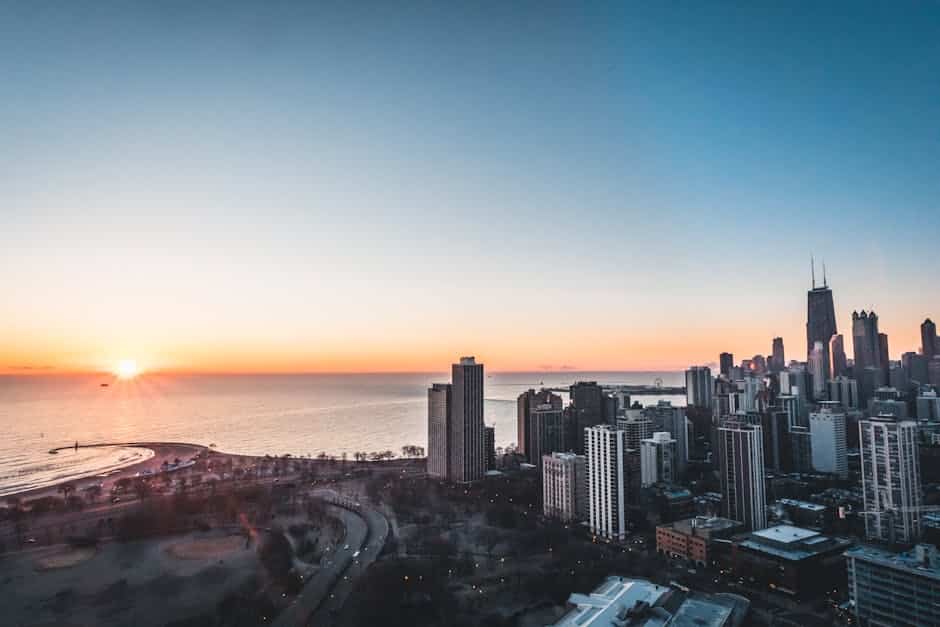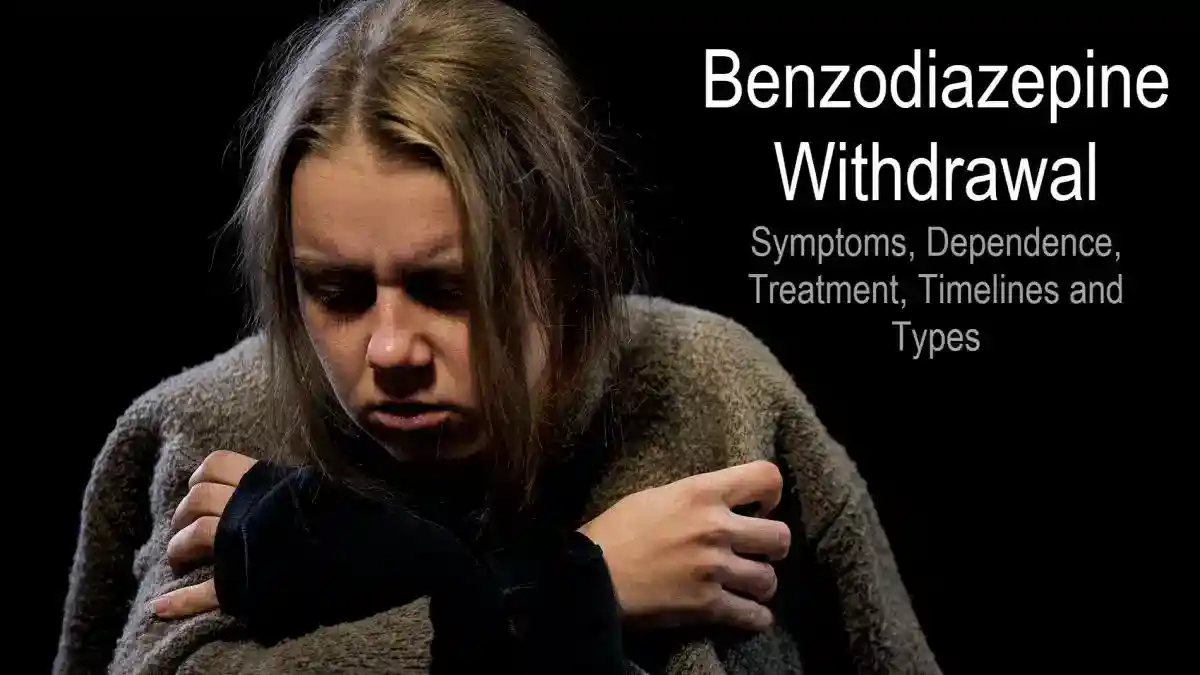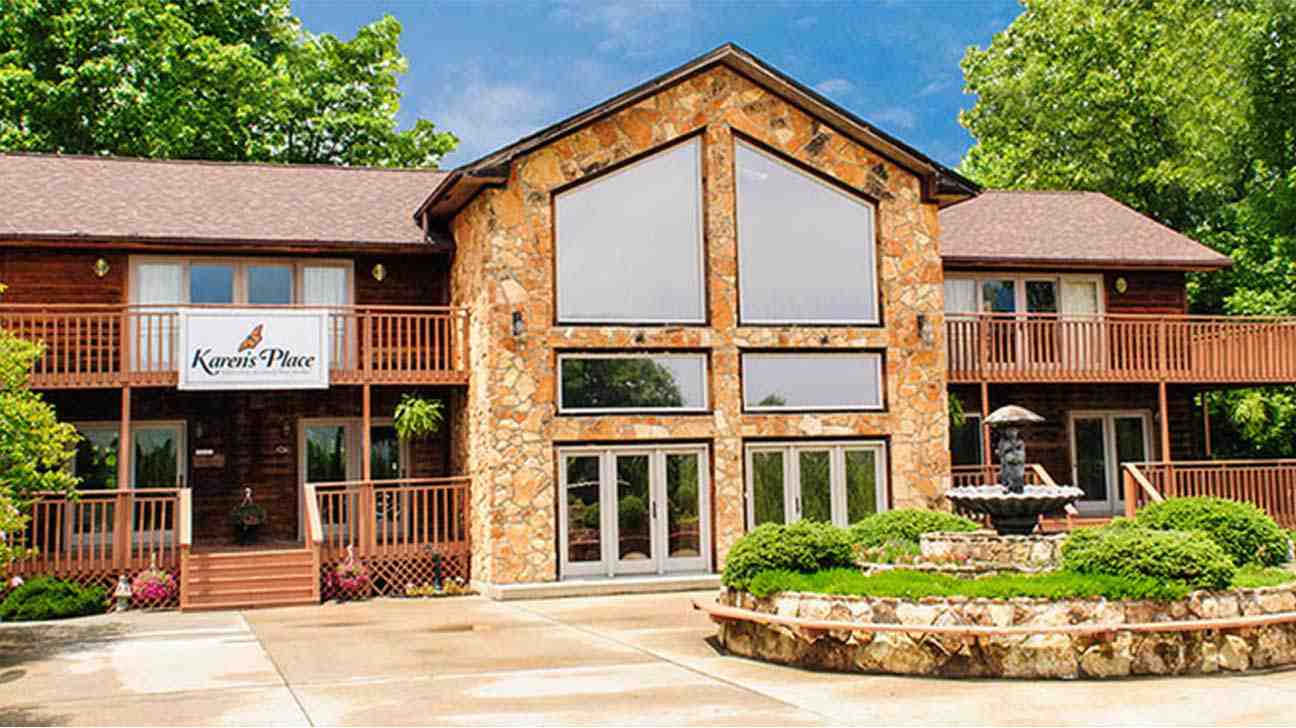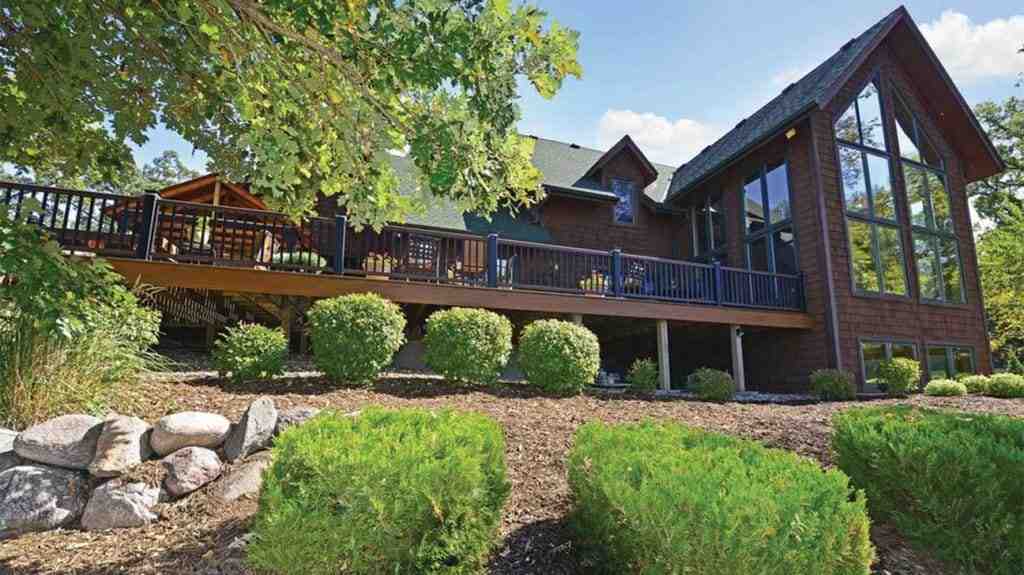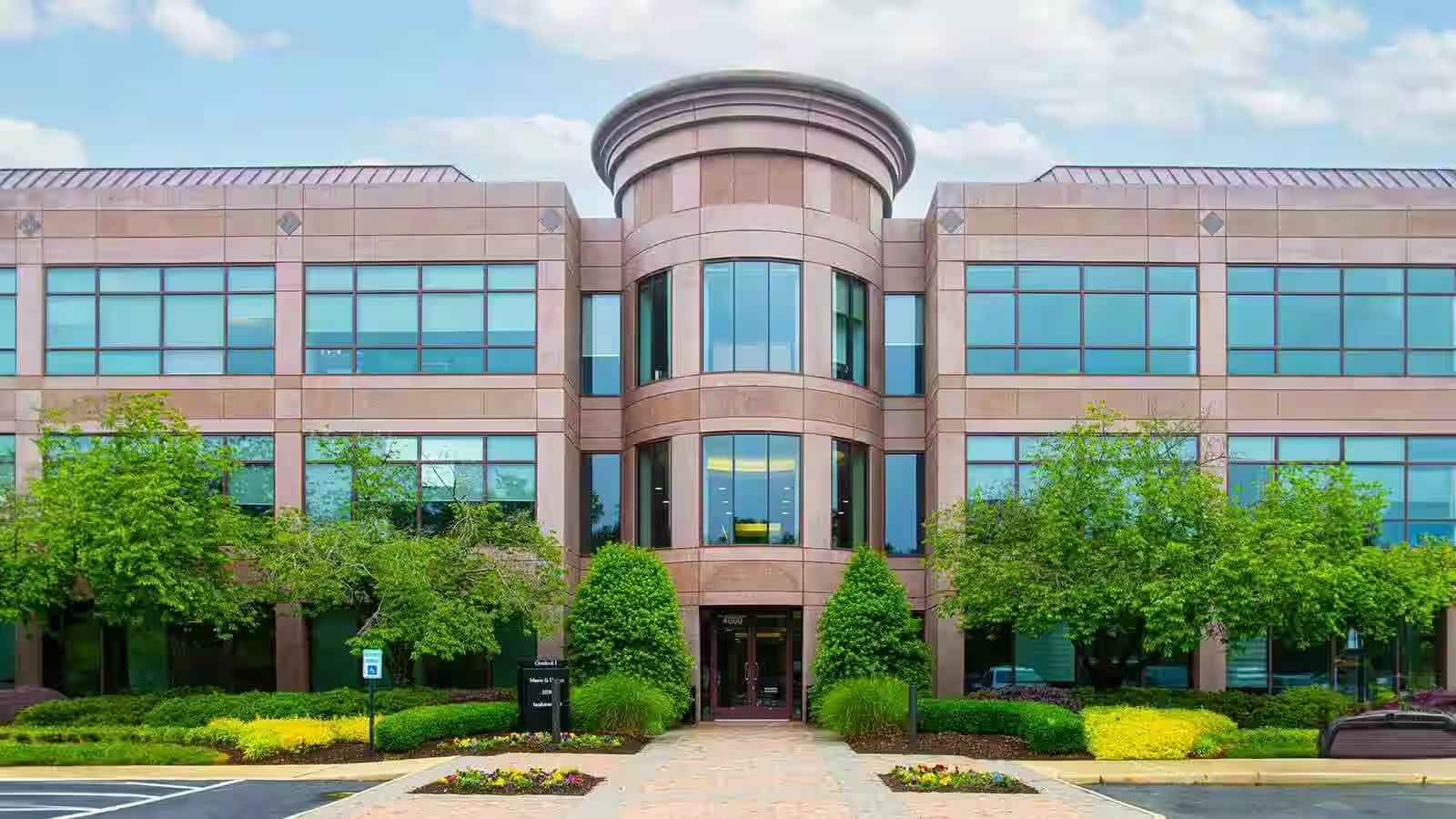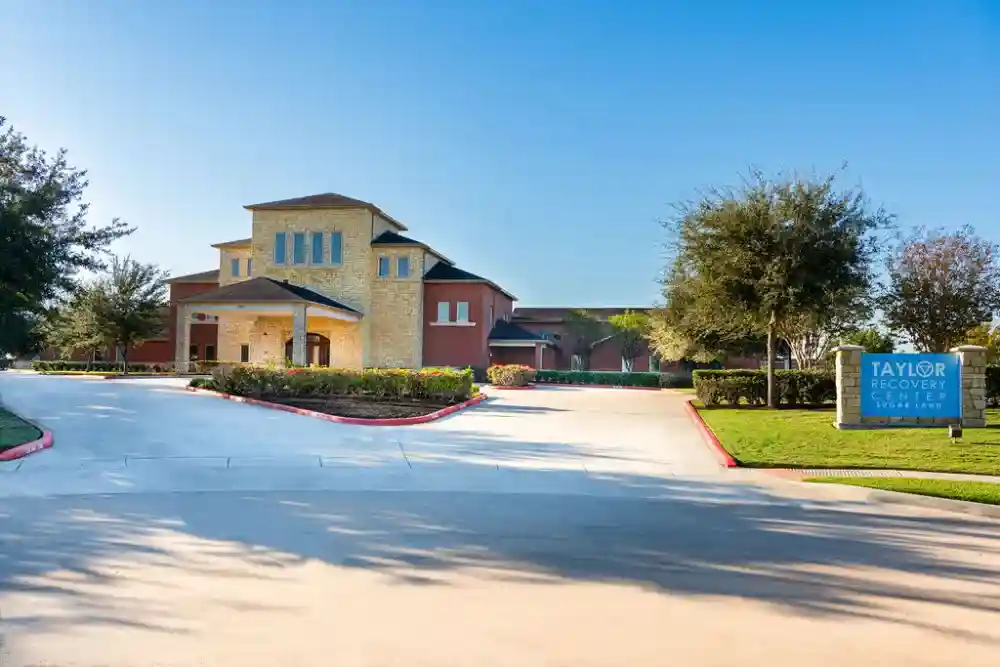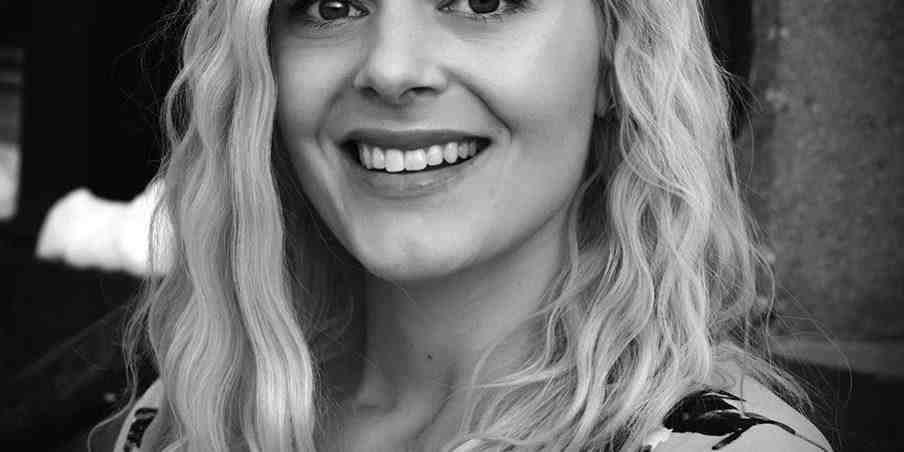
The Urgent Need for Youth-Focused Addiction Treatment
Youth addiction programs are specialized services for adolescents (12-25) with substance use disorders. They offer various levels of care, from outpatient to residential, using evidence-based approaches that address addiction and the unique developmental needs of young people.
Key types of youth addiction programs include:
- Outpatient Treatment – Weekly counseling sessions while living at home
- Intensive Outpatient (IOP) – 6-9 hours per week of therapy and group sessions
- Partial Hospitalization (PHP) – 5 days per week, several hours daily, with evening return home
- Residential Treatment – Live-in care lasting weeks to months with 24/7 support
- Dual Diagnosis Programs – Integrated treatment for addiction and mental health conditions
Over 90% of people in treatment for substance use began using during their youth. In 2022, 40.9% of young adults aged 18-25 used an illicit substance, while 15.1% of adolescents aged 12-20 consumed alcohol in the prior month. Despite these numbers, only about 1 in 4 young adults with opioid use disorder receives medication-assisted treatment.
Young people face unique challenges. Their brains are still developing, affecting impulse control and decision-making. They also steer school, family, identity, and peer pressures while dealing with substance dependence. Many also struggle with co-occurring mental health conditions like depression and anxiety, often using substances to self-medicate.
The good news? Early intervention works. Adolescents receiving appropriate, evidence-based treatment have much better outcomes. Programs that involve families, use proven therapies like Cognitive Behavioral Therapy, and treat the whole person offer the best chance at lasting recovery.
Addiction Helpline America connects families with effective youth addiction programs. We understand that finding the right treatment requires matching a young person’s unique needs with age-appropriate, compassionate care.

Youth addiction programs definitions:
Understanding the Different Types of Youth Addiction Programs
Every young person’s struggle with substance use is unique, so their recovery path must be as well. The key is finding the right level of care—not too little, but not more than necessary.
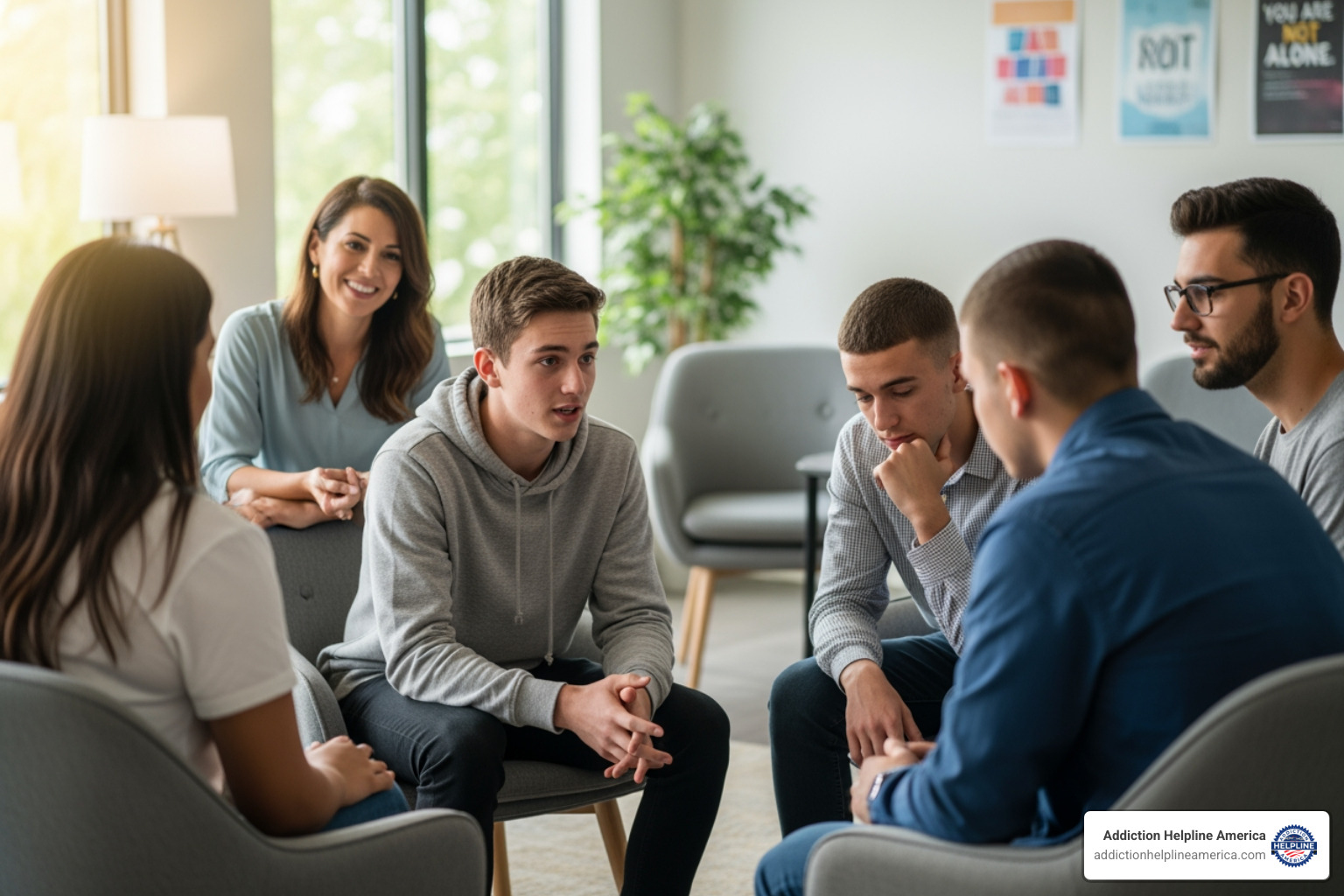
Youth addiction programs are built to meet young people where they are, providing the least restrictive environment that is still safe and effective. Professionals use the American Society of Addiction Medicine (ASAM) criteria to determine the appropriate level of care based on addiction severity, mental health, and home environment.
Much of what we know about addiction treatment comes from research on adults. It’s crucial to choose youth addiction programs specifically designed for adolescents, considering their developing brains, school pressures, and family dynamics.
Research shows that engagement in treatment significantly reduces risks like overdose. Finding a supportive program that a young person will stick with is critical. Evidence-based treatment for young adults with substance use disorders emphasizes this need for sustained engagement.
Levels of Care Explained
Addiction treatment levels are flexible, and a person may move between them as their needs change.
Outpatient programs are the least intensive, ideal for milder issues and stable homes. They involve 1-2 weekly counseling sessions while the teen lives at home and attends school.
Intensive Outpatient Programs (IOPs) offer more structure, with 6-9 hours of therapy over 3-5 days per week. Teens still live at home but receive more support. IOPs are for those needing more than weekly counseling but not 24-hour supervision.
Partial Hospitalization Programs (PHP), or day treatment, provide a higher level of care. These programs run 5 days a week for several hours, like a school day focused on recovery. Teens attend intensive therapy and return home at night. Programs like Saint Joseph Mercy Adolescent Partial Hospitalization offer this structured care.
Residential treatment provides 24/7 care in a therapeutic setting. Teens live at the facility for weeks or months, removed from daily triggers. This option includes comprehensive therapy, education, and support and is recommended when a teen needs a complete environmental break or when outpatient care is insufficient.
Inpatient care is the most intensive level, provided in a hospital for medical stabilization (e.g., withdrawal) or for severe co-occurring mental health issues requiring constant medical monitoring.
Research hasn’t proven that higher levels of care guarantee better outcomes. What matters most is finding the right fit for the individual’s specific needs and readiness for change.
Core Principles of Effective Treatment
No matter the level of care, the best youth addiction programs share several key principles.
Evidence-based practices mean using therapies and medications proven by research to be effective, such as Cognitive Behavioral Therapy and medications that reduce cravings.
Treating addiction as a chronic condition requires long-term management, not a quick fix. This approach acknowledges that setbacks can occur and focuses on continuous support, as argued in The case for chronic disease management for addiction.
Addressing youth-specific needs is essential. Teens are not small adults; their brains are still developing. Effective programs tailor their approach to these unique developmental needs.
Voluntary participation leads to better outcomes. Research shows involuntary commitment can increase risks. Effective treatment requires buy-in from the young person, and programs must work to build internal motivation with respect.
Continuous engagement is the goal. Good programs plan for ongoing support, understanding that recovery is a long-term journey and relapse can be part of the process.
Quality improvement standards ensure programs are effective. The best programs assess outcomes, update methods based on new research, and hold themselves accountable.
Navigating these options can be overwhelming. Addiction Helpline America is here to help you understand your choices and find a program that fits your child’s unique situation.
7 Hallmarks of the Best Youth Addiction Programs
When a young person is struggling with substance use, finding help is overwhelming. The best youth addiction programs share key qualities. They understand that young people need specialized care that addresses their addiction, family, and future.

Here are seven hallmarks that define the best youth addiction programs.
1. Integrated Treatment for Co-Occurring Disorders
Substance use rarely happens in isolation. Often, a young person is also battling depression, anxiety, ADHD, or trauma. This is called a “dual diagnosis” or “co-occurring disorder.” If only the addiction is treated, the root cause remains, making relapse likely.
The best programs treat both conditions simultaneously. They conduct comprehensive assessments from day one and create holistic treatment plans. This integrated approach, exemplified by programs like Kids TLC Phoenix Psychiatric Services, prevents the cycle of substance use and worsening mental health.
2. Strong Family Involvement and Therapy
Addiction is a family disease. For young people, whose families are their primary support, family involvement is essential. Research shows supportive families lead to higher sobriety rates, so effective programs actively engage family members through counseling and education.
Family therapy improves communication, addresses unhealthy dynamics, and teaches parents how to set boundaries and support recovery without judgment. The benefits are profound: families learn to communicate openly, understand addiction as a disease, find healthy coping mechanisms, reduce enabling behaviors, and heal strained relationships. Programs like Child and Family Guidance Center understand that when families heal together, recovery has a stronger foundation.
3. A Blend of Individual, Group, and Family Counseling
Comprehensive programs offer a blend of counseling because recovery isn’t one-size-fits-all.
- Individual therapy offers a safe space to explore personal issues, work through trauma, and build a trusting relationship with a therapist.
- Group therapy shows young people they aren’t alone. Connecting with peers reduces isolation and allows them to learn from shared experiences.
- Family therapy unites the family to heal relationships.
Together, these three counseling types provide comprehensive support. Programs like Family Healing Center incorporate this blended approach.
4. Evidence-Based Therapeutic Approaches
The best programs use evidence-based practices—therapies backed by scientific research with documented success.
- Cognitive Behavioral Therapy (CBT) helps young people change negative thought patterns and behaviors that fuel substance use.
- Motivational Interviewing (MI) is a client-centered method that helps young people find their own motivation to change.
- Dialectical Behavior Therapy (DBT) is valuable for teens with intense emotions, teaching skills in mindfulness, distress tolerance, emotional regulation, and interpersonal effectiveness.
Programs like The Cognitive Connection use these therapies to give young people tools for life.
5. Appropriate Use of Medication for Addiction Treatment (MAT)
For certain substance use disorders, like Opioid and Nicotine Use Disorders, Medication for Addiction Treatment (MAT) can be a lifesaving component of care. MAT combines FDA-approved medications (like buprenorphine or naltrexone for OUD) with counseling. These medications reduce cravings and withdrawal, stabilizing brain chemistry so therapy can be effective.
Despite clear research showing MAT improves outcomes, a massive treatment gap exists. Only 1 in 4 young adults with OUD receives it. The best programs integrate MAT under medical supervision when clinically appropriate, as exemplified by facilities like Stonewater Adolescent Recovery Center.
6. Focus on Life Skills and Relapse Prevention
Addiction interrupts development, so effective programs teach practical life skills for a successful recovery. This includes teaching healthy coping and decision-making skills, building self-esteem, and providing educational or vocational support.
A crucial component is trigger identification and developing strategies to manage them, making relapse prevention a practical skill. Evidence-based practices help adolescents build these life skills. Programs like Teen Challenge integrate comprehensive life skills and relapse prevention training into their models.
7. A Developmentally Appropriate and Engaging Environment
Young people are not mini-adults; their developing brains and unique social needs mean treatment must be developmentally appropriate. The best programs offer age-specific treatment with therapeutic approaches custom to their developmental stage.
They use trauma-informed care, with staff trained to create a safe, respectful, and non-judgmental environment. The environment fosters positive peer connections and empowers young people to take ownership of their recovery. Programs like Mount Sinai Adolescent Health Center exemplify this focused approach, understanding that a welcoming environment is essential for success.
At Addiction Helpline America, we know these seven hallmarks are what to look for in a program that can truly transform a young person’s life.
Navigating Treatment: Access, Goals, and Outcomes
Finding the right help is the first step. The recovery path involves navigating obstacles like insurance and availability, and understanding what success looks like. Let’s explore these challenges and what families can expect.

Overcoming Barriers to Accessing Youth Addiction Programs
Knowing the common barriers to youth addiction programs can help you prepare.
Stigma is a major obstacle, causing families to hesitate due to fear of judgment. Promoting the medical understanding of addiction as a health condition, not a moral failing, helps reduce this stigma.
Cost and insurance can be a maze. Many programs accept Medicaid, offer sliding fee scales, or have other payment options. Addiction Helpline America helps families understand their benefits and find affordable programs. Don’t let cost be a barrier to calling.
Consent laws present a unique challenge. In most states, teens must consent to their own treatment, and parents cannot access records without permission. Understanding this law helps steer the process.
Finding qualified providers nearby can be difficult. A shortage of specialized youth programs and trained clinicians exists in many areas, leading to long waitlists. Programs like Encompass Community Services Youth Services work to bridge these gaps.
Involuntary commitment is not the answer. Research shows it doesn’t improve outcomes and can increase overdose risk upon release. Voluntary engagement is the goal, as young people who choose treatment are more likely to benefit.
Young adult ambivalence is common. They may not see their substance use as a problem. Family training approaches like Community Reinforcement and Family Training (CRAFT) can help families encourage treatment effectively.
We offer free, confidential guidance to help you find the right program and steer these barriers. You are not alone.
What to Expect from Youth Addiction Programs: Goals and Success
Recovery is different for everyone. Effective programs have goals beyond abstinence, and understanding what success means helps families stay hopeful.
- Improved mental health: Addressing co-occurring conditions improves emotional regulation and stress management.
- School success: Many programs offer educational support to help teens catch up and re-engage with learning.
- Healing family relationships: Through therapy, communication improves, trust is rebuilt, and parents learn to support without enabling.
- Increased self-worth: Treatment helps young people build self-worth and learn self-care.
- Effective coping skills: Programs teach lifelong coping skills and relapse prevention strategies.
Experts emphasize that goals should be broad and patient-centered. Success isn’t just about abstinence; reducing use while improving other life areas is real progress. This flexible approach keeps more young people engaged.
Positive outcomes families often see include:
- Sustained reduction or complete abstinence from substance use
- Better grades and increased interest in school or work
- Healthier relationships with family members and friends
- Improved ability to handle emotions and stress
- Development of practical coping strategies
- Increased confidence and belief in themselves
- Active participation in support groups or recovery communities
- Lower risk of relapse and overdose
- Engagement in positive hobbies and social activities
Recovery is a journey with ups and downs. The best programs provide ongoing support, understanding that what matters most is continued progress and building a life worth living.
Recovery is possible. At Addiction Helpline America, we can help you find the right treatment. Find the right youth addiction program for your family, and take the first step toward healing.
Conclusion: Finding the Right Path to Recovery
A young person’s recovery journey requires patience, compassion, and the right support system. This guide has covered the hallmarks of effective youth addiction programs: integrated dual diagnosis treatment, family involvement, evidence-based therapies, appropriate medication use, life skills training, and a developmentally appropriate environment.
These are the building blocks of programs that understand the unique developmental needs of adolescents. The best youth addiction programs treat young people with dignity and respect, providing the structure needed to heal.
Reaching out for help is hard, but recovery is possible, and you are not alone. Early intervention makes a difference, and with the right, compassionate treatment, young people can have a healthy, fulfilling future.
Finding the right fit is crucial, and personalized guidance is invaluable. Addiction Helpline America has a nationwide network of treatment centers. We understand the landscape of youth addiction programs and are here to help you steer it.
Our service is free and confidential. We listen to your family’s situation and connect you with programs that fit your young person’s specific needs, whether you’re looking for outpatient counseling in California, a partial hospitalization program in New Jersey, or residential treatment in Massachusetts.
The path to recovery starts with a single step—reaching out. Let us walk alongside you as you find the right youth addiction program for your loved one.
Our helpline is 100%
free & confidential
If you or someone you care about is struggling with drug or alcohol addiction, we can help you explore your recovery options. Don’t face this challenge alone—seek support from us.
Programs
Resources
Will my insurance
cover addiction
treatment?
We're ready to help
Find the best
drug or alcohol treatment
center
Are you or a loved one struggling with addiction? Call today to speak to a treatment expert.

